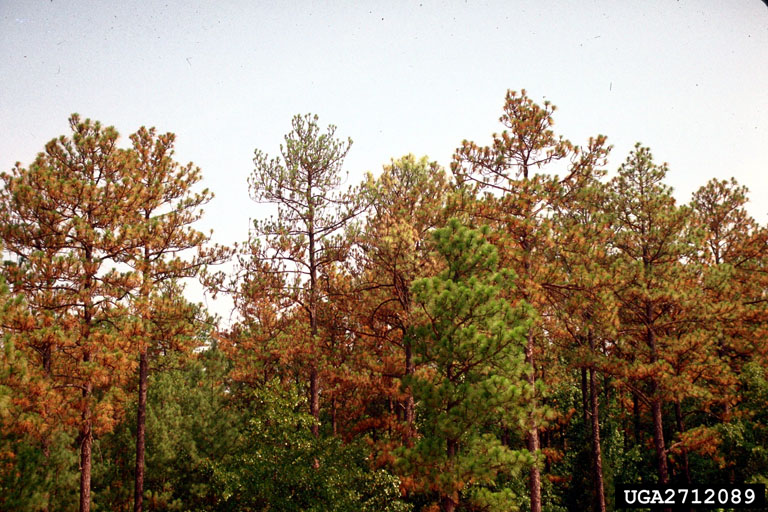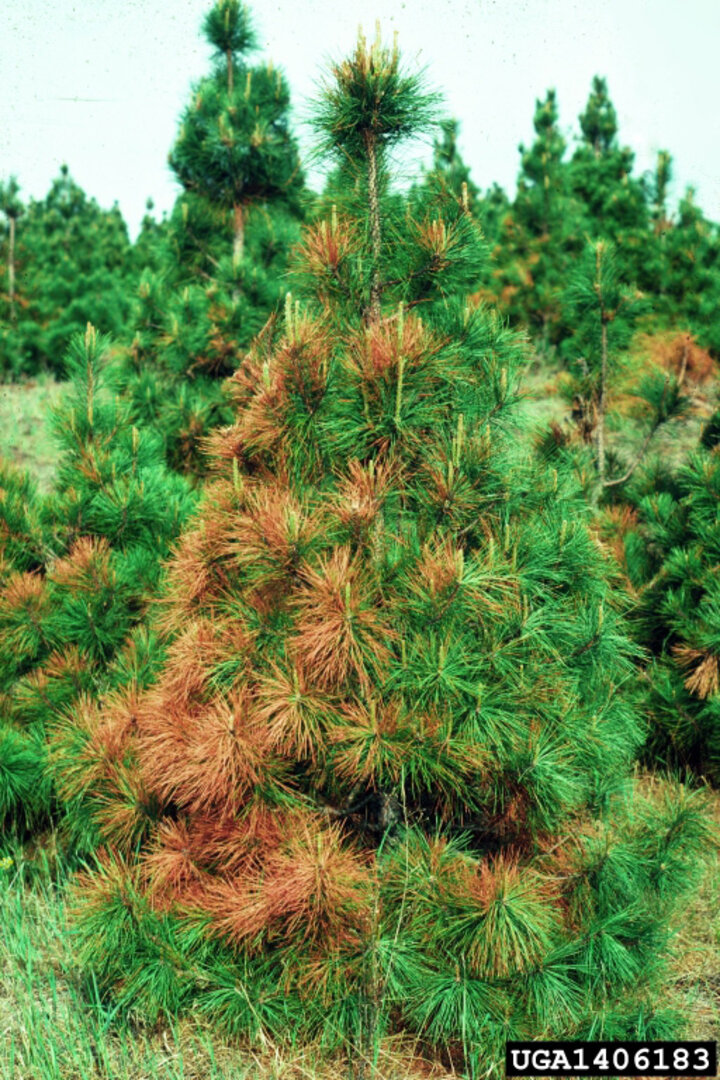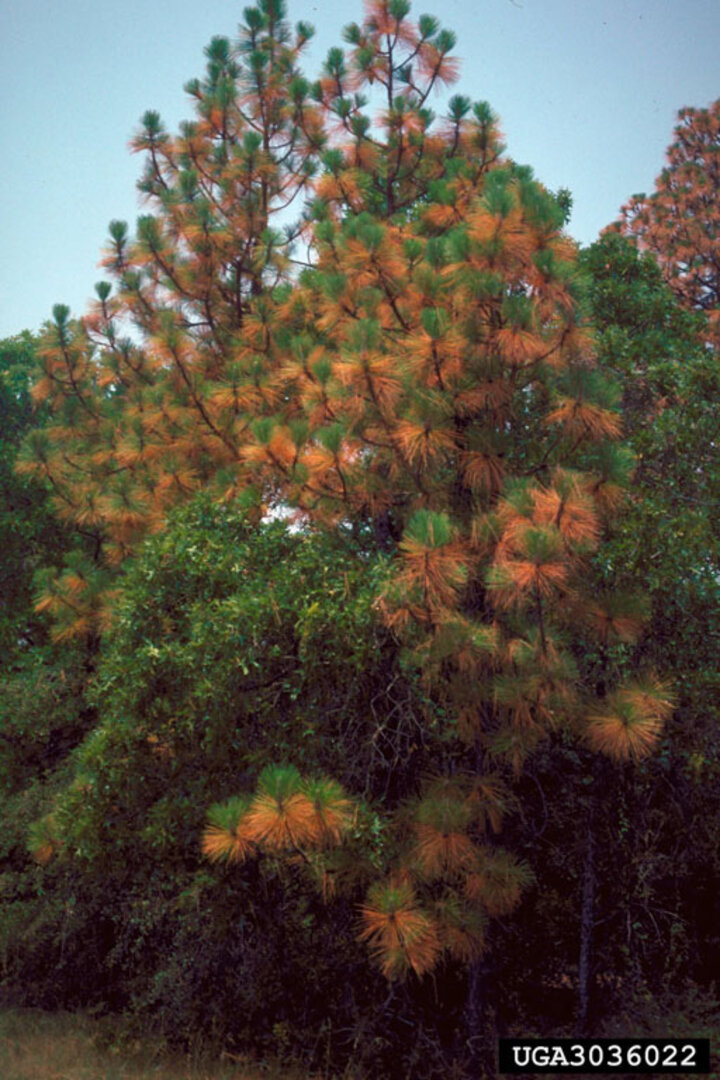Sarah Browning, Nebraska Extension Educator

Drought damage to pine trees. Image by Andrew J. Boone, South Carolina Forestry Commission, Bugwood.org
Looking at your pine trees this time of year, you may see generalized yellowing of the tree, brown needles or brown branches. Several problems could be responsible, including winter burn and winter drying, Diplodia tip blight or pine wilt. And unfortunately, some trees can be affected by more than one problem at a time.

Winter burn is most obvious on coniferous trees due to the browning of the needles during the winter months, but it can also damage deciduous trees. Winter burn is basically freeze damage caused by rapid temperature changes, which most often occur during sunset or sunrise, often when mild winter daytime temperatures are quickly followed by arctic temperatures at night.
Often winter burn is more evident on the south side of trees where there is more exposure to the sun. Rapid temperatures changes may damage or kill needles, but sometimes branch tissues. Winter burned trees usually recover, if the buds are healthy, when new growth in the spring cover damaged areas. However, when damage is severe, whole trees can be killed.

Minor damage results in reddening or browning of foliage, which may later recover. Symptoms of more severe injury include browning and the subsequent death of branch tips or entire branches. The side of the tree facing prevailing winds is most susceptible to winter drying.
Often a combination of winter burn and winter drying will occur, occasionally compounded by drought. If damage is severe enough, affected branches or sometimes an entire tree, may be killed.
Little can be done to control the weather, but a few precautions can be taken to reduce the possibility of winter weather injury. Whenever possible:
- Choose species which are hardy and best adapted to the area.
- Plant in well-drained, deep soils.
- Plant where trees are protected from winds and sun.
- Water young trees thoroughly in the fall, and possibly during the winter when the soil in not frozen.
- Mulch around trees to prevent deep freezing.
- Maintain a fertile, well-aerated soil to encourage deep root growth.
Images
- General frost and winter injury. USDA Forest Service - North Central Research Station, USDA Forest Service, Bugwood.org.
- Drought of longleaf pine (Pinus palustris P. Mill.). Robert L. Anderson, USDA Forest Service, Bugwood.org.
Search Our Archive
Associated Video
Evergreen Winter Kill
UNL Extension Holt County Educator Amy Timmerman takes a look at evergreens and cedars that have sustained damage from the harsh winter conditions.